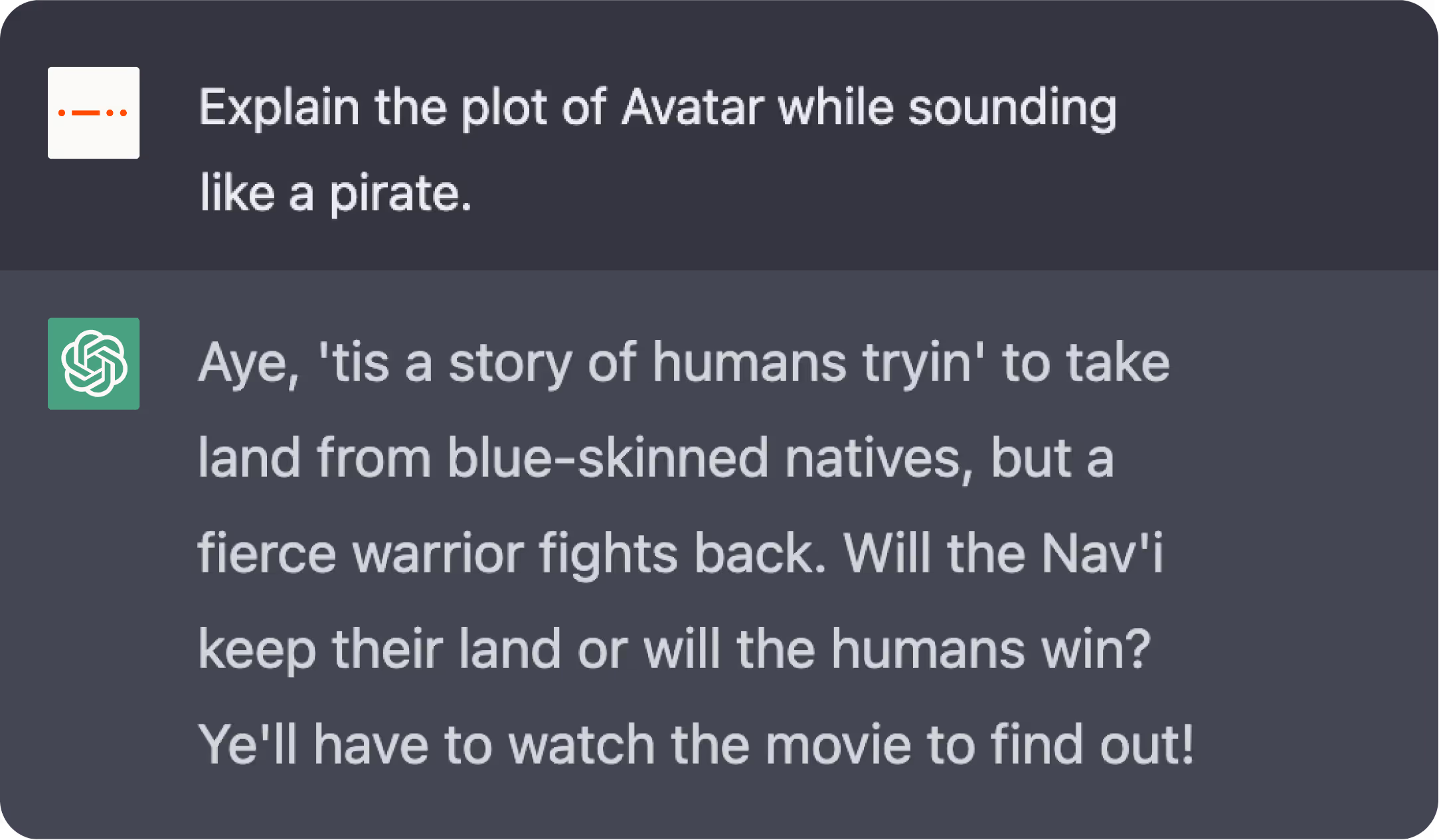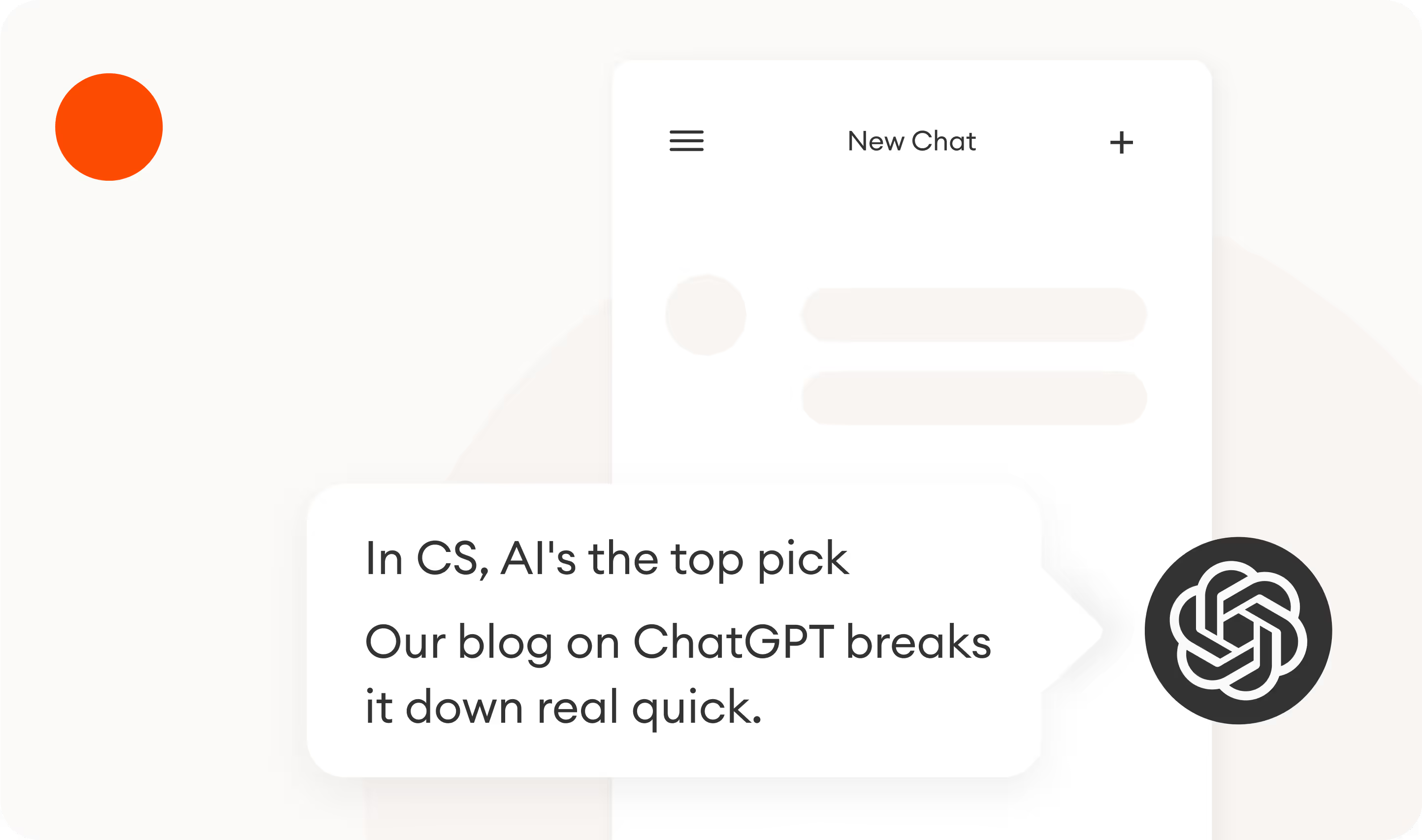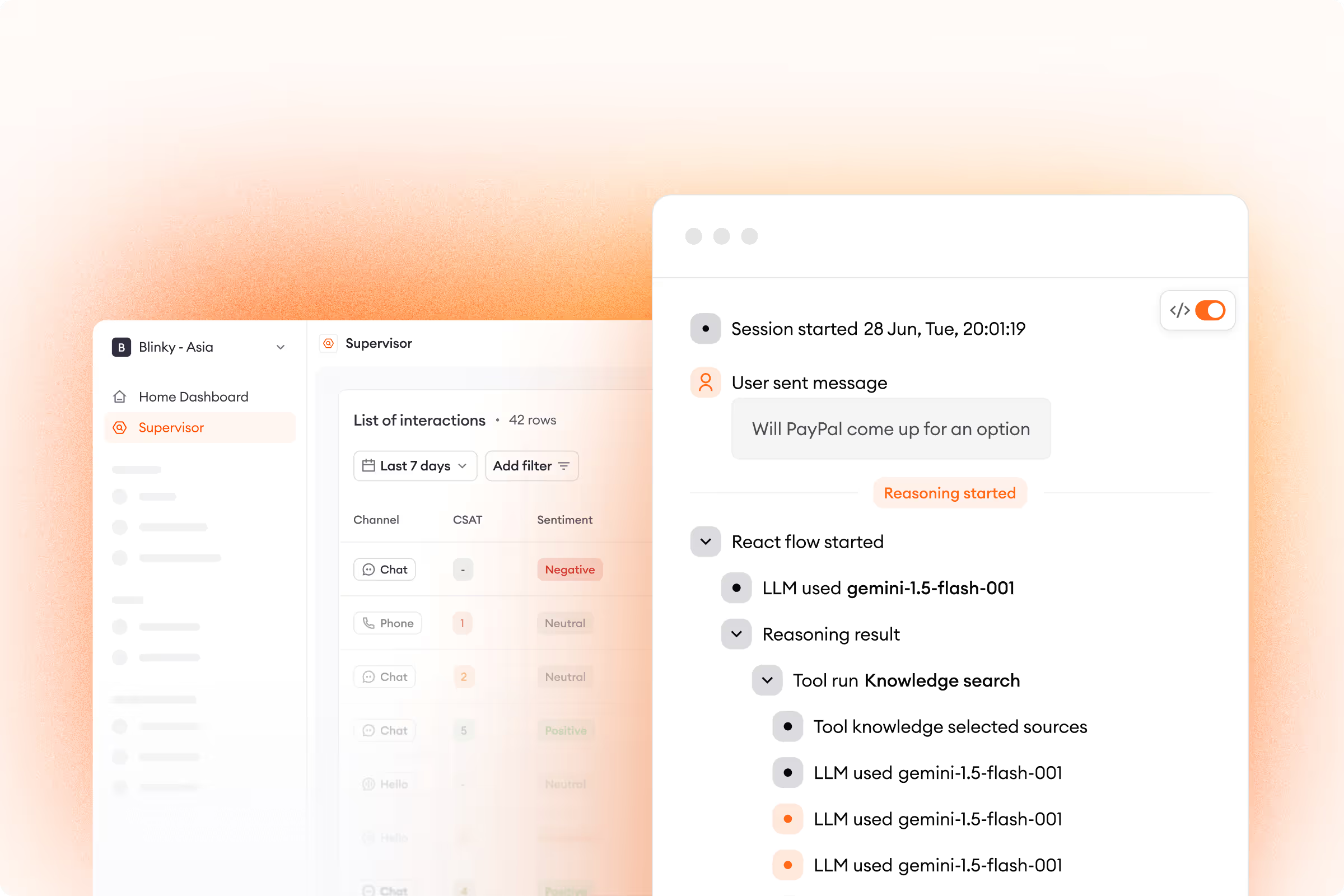In recent months, ChatGPT has brought the possibilities of AI in customer service into the spotlight. The widespread appeal of OpenAI’s groundbreaking tool highlights just how much demand exists — among customers and brands alike — for an intelligent chatbot.
The emergence of ChatGPT has sparked a new gold rush to uncover how best to apply artificial intelligence in customer service. Leaders who may have been skeptical before are now reevaluating their stance and asking themselves:
What are AI’s practical uses and limitations?
Moving past the marketing buzzwords and understanding this balance is essential to effectively leverage ChatGPT’s technology and improve the overall customer experience.
What is ChatGPT, and how does it work?
ChatGPT (GPT stands for generative pre-trained transformer) is an AI chatbot launched by OpenAI in 2022. Released first as a demo, the program is now commercially available.
Upon release, ChatGPT was built on an extremely powerful large language model (LLM) called GPT-3 (more specifically, an updated version known as GPT-3.5). As of March 2023, ChatGPT uses an even more effective LLM, GPT-4, and this evolution is expected to continue.
LLMs are computer programs with the ability to understand written language. They can read, summarize, translate, and predict. LLMs aren’t new to AI or the customer service industry. They’re already being used — to various extents — to power leading customer service automation software.
However, ChatGPT’s models take things up a notch, using such advanced machine learning (ML) that it’s capable of understanding texts and generating human-like responses at an unparalleled level. This ability has made it immensely popular — users can have entire conversations with the chatbot that feel like genuine human interactions. By and large, the public has been awe-struck by ChatGPT’s ability to creatively answer diverse prompts ranging from Write me an email thanking my customers to Explain the plot of Avatar while sounding like a pirate.

And customer service is no different. But does a chatbot like ChatGPT have practical applications in the world of customer care?
How can you use ChatGPT in customer service?
ChatGPT may be taking the world by storm, but it's important to remember that this technology has been available — and effectively leveraged in customer support — for years before OpenAI’s heavily publicized launch.
ChatGPT's biggest impact on customer service is that it has paved the way for a broader audience to see AI’s potential. It shows what’s possible with LLMs, and, when designed correctly, how AI-powered automation software can finally bring radical improvements across customer service and deliver the phenomenal experiences that have long been promised.
While this promise is real, ChatGPT itself isn’t ready to deliver these meaningful advancements in customer service. That being said, the LLMs that power it are. Today, leading automation companies like Zowie are using it to redefine the chatbot experience.
What’s possible with LLMs? Here are the four biggest ways LLMs — the technology behind ChatGPT — can have an immediate impact on customer service:
1. Identifying repetitive questions
LLMs allow for more efficient ways of training chatbots. They spot similarities (or differences) in the meanings between several pieces of text, helping support teams pinpoint customer inquiries that are easiest to automate — repetitive questions.
For example, a question concerning a customer’s order status can be asked in over 60 different ways, including:
Where’s my order?
Can I track my package?
How do I locate my parcel?
For rudimentary chatbots, each of these must be treated as a unique question, requiring the chatbot operator to input each variation individually. Any version not taken into account likely won’t be recognized by the chatbot.
ChatGPT, however, demonstrates how chatbots can start automating with far fewer learning phrases. Better yet, many LLM-based chatbots even come with pre-trained AI models. By generating these potential automations on their own, they eliminate the need for time-consuming manual training. Businesses see meaningful automation and deflection rates without delay.
It’s important to note that today’s most robust AI solutions are already trained with hundreds of predefined automations to get them up and running from day one. They recognize trends and propose new automations, allowing businesses to quickly expand their knowledge base, boost self-service potential, and provide automations for misspelled customer queries.
2. Configuring answers with pre-existing data
One of the biggest hurdles stopping support teams from building effective chatbots is configuration. For a bot to work, it needs to be fed the right information, and this implementation can be costly and drawn out.
ChatGPT has revolutionized chatbot configuration by showing it’s possible to streamline the entire process. Once an LLM has access to the appropriate pre-existing data, like a company’s knowledge base or FAQs, a chatbot can instantly pull from that information to automate incoming questions. And these models don’t just store info — they understand it. When customers ask a question, there’s a high probability your chatbot will identify and deliver the specific information they’re looking for.
The best part is customers won’t receive a regurgitated answer. ChatGPT is an example of generative AI, meaning it builds its responses from scratch. It’ll use your FAQs to form an answer, but it’s free to choose the actual wording.
Generative AI chatbots are able to build stronger engagements suited to each customer’s individual needs. Customers asking identical questions receive correct, unique responses — not cookie-cutter replies — without any human intervention.
3. Collecting actionable customer feedback
With most customer service chatbots, asking users for feedback with follow-up questions is routine enough. But finding out what actions to take based on this feedback is often easier said than done.
Currently, it’s not uncommon for support agents to have to manually analyze customer feedback. For many, finding customers’ top priorities and deciding what actions to take next is inefficient, and slow reactions only lead to greater customer frustration.
AI tools like ChatGPT enhance a customer service department’s ability to act on feedback by placing the voice of the customer front and center. Generative AI collects feedback and automatically analyzes it, delivering overall sentiment and the top customer pain points right to your inbox.
What’s more, it takes a proactive approach by detecting pain points and proposing automations to frequently asked questions. By offering an in-depth customer analysis, AI empowers customer service agents to make better-informed decisions with unprecedented ease.
4. Creating natural conversations
A common complaint concerning legacy chatbots is how stale, clunky, and impersonal they are. Shoppers know they’re interacting with a bot and often have to repeat themselves, ruining the customer experience.
But ChatGPT has proven chatbots can enhance the customer experience. Automation tools based on natural language processing (NLP) are much more effective at producing text with a human-like feel. These solutions don’t reply with short, robotic answers or force you to choose from a decision tree of options. Instead, they engage in conversations that closely resemble interactions with human agents.
Thanks to these natural and intuitive exchanges, customers are now more eager to interact with a chatbot. Even when they can’t reach a human agent, they still have 24/7 access to a tool capable of recreating the agent experience.
Once again, AI tools with the ability to naturally interact with customers predate ChatGPT and have been available for years. Innovative automation solutions can let a brand’s voice shine through in personalized customer chats that augment the overall customer experience.

What are ChatGPT’s limitations in customer service?
Technology like ChatGPT has the potential to take customer service into new territory — but this version, and even subsequent ones, won't be able to make serious inroads into customer support any time soon. As OpenAI’s CEO and co-founder Sam Altman puts it:

The biggest limitations have to do with the generic and unpredictable nature of the program. These constraints are particularly glaring for those who hoped ChatGPT could offer a quick fix for all their customer support needs.
Rather than being the plug-and-play hero some have made it out to be, ChatGPT’s value in customer support is still lacking in the following ways:
1. You can’t control the answers
One of the things that makes ChatGPT so enticing to the public is also one of the biggest obstacles restricting its use in customer service — the inability to control its responses.
Why?
ChatGPT excels at generating new ideas and text from scratch because it doesn’t follow a predefined script. But this lack of a script also makes it difficult for ChatGPT to retrieve relatively simple, factual information. A chatbot using generative AI may respond with what it sees as a correct answer, but there’s a chance its replies are out of date, inaccurate, or plainly false.
Moreover, applying a tool like ChatGPT to customer service means a business won’t be able to guarantee the same experience for every customer. A GPT-powered chatbot is free to answer questions in its own words, giving different answers each time the same question is asked. This makes ensuring consistent, positive experiences for all of your customers an impossibility.
2. It isn’t built for customer service
ChatGPT can be extremely effective for general purposes, but for something as specific as customer service, it often falls short. It can’t handle the nuanced scenarios that existing tools built for customer support already take care of with ease. Unlike these solutions, ChatGPT can’t set up workflows or manage your product catalog for agents — these would need to be done manually.
In addition, ChatGPT still isn’t capable of:
- Overseeing ticket management and escalation
- Offering omnichannel support
- Providing real-time customer and product information
For fields like ecommerce, where effective customer service chatbots are now seen as essential, ChatGPT holds businesses back by not intuitively knowing a company’s FAQs. Chatbots only deliver intelligent answers when they’re fed the right information into their knowledge base. Ecommerce tools can tap into your FAQs and answer your most common customer questions on day one. ChatGPT can’t, meaning there’s a good chance customers relying on it will receive a negative experience.
3. It can't be tailored to your business
ChatGPT doesn’t currently allow businesses to feed it answers or a specific dataset. This makes it impossible to ensure it’s providing consistent, accurate information about your business. Instead, you’re at the mercy of whatever it finds on the Internet — and that’s only half the problem.
Say you can supply your own responses. How do you know what to add? Without a list of prompts, it may take months, if not longer, for the chatbot to provide meaningful answers.
Presently, ChatGPT is too inflexible to adapt to any business’s distinct needs. But that’s not to say this capability doesn’t exist — this level of customization is already available in today’s top customer service automation software.
How Zowie leverages the best of AI to enhance the customer experience
While ChatGPT isn’t ready to be deployed in customer service, you don’t have to wait to incorporate this technology into your customer support solution.
Zowie is built on an LLM specifically designed for ecommerce businesses. With Zowie, you get the best AI has to offer. It identifies repetitive questions, configures answers with pre-existing data, collects actionable feedback, and creates natural customer service interactions — all without the drawbacks of ChatGPT.
Simply put, Zowie harnesses the potential of ChatGPT and delivers an AI-powered customer service automation solution that’s already transforming support for brands across several industries.
Here at Zowie, we’re not satisfied yet, and we’re constantly working to advance our solution. This way, we can continue to provide next-gen AI that better recognizes repetitive questions, simplifies the onboarding process, and grants brands unfettered access to the voice of their customers.
What to do with ChatGPT
The LLMs powering ChatGPT will continue to advance and develop. While there’s optimism the product could advance the online customer experience, GPT-4 is far from a viable solution. However, that doesn’t mean you can’t start using intuitive AI technology today.
With this tech, Zowie has built a customer support chatbot designed for ecommerce — with impressive results.
To see how Zowie’s powerful AI solution equips customer service teams with everything they need to maximize efficiency and unlock their revenue-generating potential, book a demo today.
.avif)







